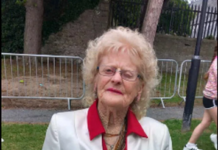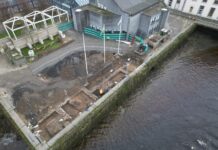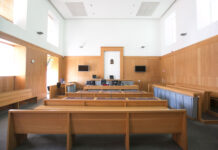
A FORENSIC engineer for a jailed driver who is suing the MIBI for injuries he suffered in a crash that claimed the life of #Limerick teenager, has told the High Court that the level of damage caused to the three cars involved was the worst he had ever seen in over 20 years.
Limerick consultant engineer Tom Hayes, told Mr Justice Brian Cregan at the High Court that he saw the images of the cars involved in the 2006 “urban crash” and it was the worst I have seen in my experience”.
Mr Hayes said that further analysis of the scene of the crash on the Balliysimon Road in Limerick in September 2006 revealed that the car carrying Emma Woodland, had fully crossed the road and was clear of oncoming traffic before it was smashed and claimed the life of the 19-year-old.
In the aftermath, Gearoid Cleary (32) from Ballinacurra Gardens, Limerick, was jailed for three years in 2008 after he was found guilty of dangerous driving causing the death of the Limerick teenager, but he denied being the cause of the accident.
Ms Woodland died from serious head injuries when the Toyota Starlet she was in was struck by Cleary’s Honda Integra.
However, in a civil case opened at the High Court, Justice Cregan was told that Cleary’s Honda was struck by a 300 horsepower BMW 5-series which was driven by a drunk Roman Andreas just seconds before the fatal impact.
Subsequently, Cleary’s car was propelled on to the Starlet smashing it to a wall.
Andreas fled the scene but was later prosecuted and jailed for three years for the same offence after pleading guilty.
In his evidence to the High Court as Geared Cleary sues the MIBI for compensation for physical and psychological injuries suffered as a result of the crash, Mr Hayes said that gouge marks on the road at the site of the crash indicated that Cleary’s Honda would not have collided with the Toyota Starlet but for the rear ending impact of the high powered BMW.
“One piece of hard evidence available from the garda report is a gouge mark that was left on the road which was made by the wheel of the Starlet when it was hit by the Mr Cleary’s Honda. The mark is not on the main road that Cleary was traveling on, but on the side road after it had crossed in front of the Honda,” Mr Hayes revealed.
In reference to CCTV footage shown on the second day of the High Court action, Mr Hayes accepted that the footage captured outside Limerick Prison just before the crash “showed one car overtaking two taxis and being hotly pursued by another car”,
However, in a robust series of exchanges, Michael Gleeson SC for the MIBI questioned Mr Hayes as to why he did not reference the footage in his expert report and suggested that as it didn’t fit the plaintiff’s case, the engineer was “happy to leave it out”.
Mr Hayes said that at the original criminal trial, he formed the opinion that the footage was not “fully reliable in establishing the speed of the cars on the night.”
“Suggesting that I am in some way trying to conceal evidence from the court is ridiculous and something that I find personally offensive”, Mr Hayes retorted with vigour.
Mr Hayes however said that he accepted that “speed was a factor in the crash”, but he added that the Honda was propelled forward by an extra 20kmph after it was hit by Andreas’ BMW.
The court was told that Cleary’s Honda was travelling on the road straight out of Limerick City at a speed between 70 and 80km/h, but Mr Hayes said that there would have been no collision with the Starlet if Cleary wasn’t “deflected to the left by the BMW causing him to be out of control of the car”.
Earlier in the case, Cleary accepted that he was travelling at a “ferocious speed” for the urban road he was on, but denied that he was “racing” Andreas in the BMW and “dicing with death” before he said that the courts “got it wrong” in convicting him over the death of the teenager.
Asked if he felt that his estimated speeds the cars were travelling at were conservative, Mr Hayes said that he was “of the view that the speeds I have put forward in my report are reasonable.”
Referencing that Andreas was drunk while driving his BMW, Mr Hayes said that “If you are drunk your ability to react is compromised and the ability to monitor your surroundings would also be compromised.”
John O’Sullivan, a forensic crash investigator told the trial that there was a serious level of damage caused to all vehicles, but that if Cleary was not struck from behind, the crash would not have happened. Equally so, he agreed that if Cleary was travelling at 50km/h the crash would not have occurred.
Earlier before Mr Justice Cregan, Cleary’s girlfriend, Marian Lyons, who suffered a number of injuries including two broken hands, said that she was in the car with Gearoid before the crash.
“Next thing I knew, we got a bang from behind, I couldn’t breath and I woke up with firemen and everyone around me.
“It took my breath – I thought I was dying”.
The case continues next Monday before Mr Justice Brian Cregan at the High Court.










